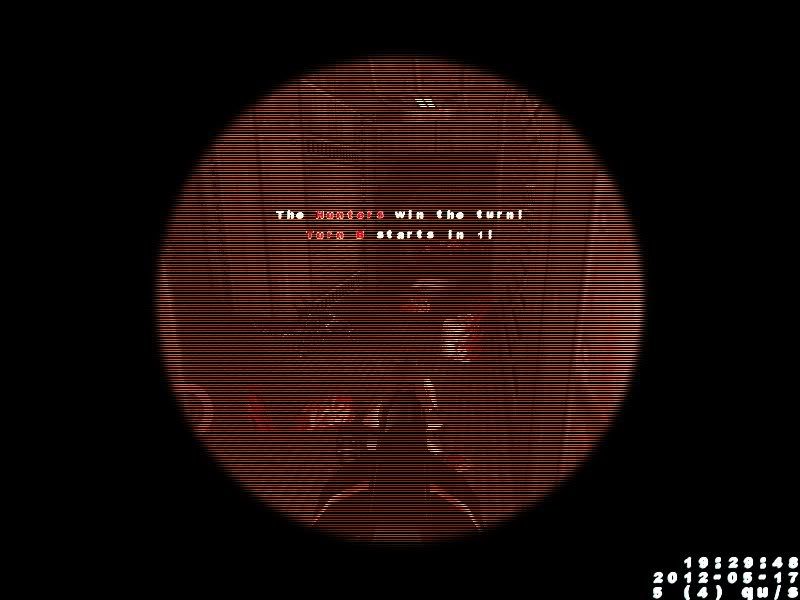What are you working on?
Moderator: InsideQC Admins
Re: What are you working on?
just support md3, and do some setattachment.
in software
somehow this needs to be done
in software
somehow this needs to be done
- leileilol
- Posts: 2783
- Joined: Fri Oct 15, 2004 3:23 am
Re: What are you working on?
Well, I've just pushed IQM support to QF's git repository. GLSL only (default renderer is GL, and it will segfault if it tries to load an IQM: +set vid_render glsl).
Does anybody have any iqm models they're willing to share? Preferably with normal maps (so I can test my lighting code).
Here are some screenshots (click for bigger):
I dropped mrfixit in as zombie.mdl...
"Oh darn, it just ain't our day today."
[edit] I should mention that it is with much thanks to Spike for his help in getting iqm animation working
Does anybody have any iqm models they're willing to share? Preferably with normal maps (so I can test my lighting code).
Here are some screenshots (click for bigger):
I dropped mrfixit in as zombie.mdl...
"Oh darn, it just ain't our day today."
[edit] I should mention that it is with much thanks to Spike for his help in getting iqm animation working
Leave others their otherness.
http://quakeforge.net/
http://quakeforge.net/
- taniwha
- Posts: 399
- Joined: Thu Jan 14, 2010 7:11 am
Re: What are you working on?
LOL, Mr. Fixit had it easy in Cube2! Screenshots look great. Both a classic look and a modern model format is possible.
-
qbism - Posts: 1236
- Joined: Thu Nov 04, 2004 5:51 am
Re: What are you working on?
I'm glad you found it amusing  I had put the rockets on super-slow mode (10qu/s!) to get some nice steady dlights for testing my lighting. When I fired a few and saw them heading for Mr Fixit, many scenes of "Oh dear", "Oh bother" etc from various movies came to mind.
I had put the rockets on super-slow mode (10qu/s!) to get some nice steady dlights for testing my lighting. When I fired a few and saw them heading for Mr Fixit, many scenes of "Oh dear", "Oh bother" etc from various movies came to mind.
Leave others their otherness.
http://quakeforge.net/
http://quakeforge.net/
- taniwha
- Posts: 399
- Joined: Thu Jan 14, 2010 7:11 am
Re: What are you working on?
taniwha; I have many IQMs as part of my Remake Quake related work. No normal maps though (however it's not hard to create those yourself with crazybump or one of the gimp/photoshop plugins).
I can make a zipfile for you.
There is QC to go with some of them, not sure if you want that as well.
also, good job.
I can make a zipfile for you.
There is QC to go with some of them, not sure if you want that as well.
also, good job.
-

goldenboy - Posts: 924
- Joined: Fri Sep 05, 2008 11:04 pm
- Location: Kiel
Re: What are you working on?
goldenboy: ooh, yes please (model collection). Having a bit of variety will make the gl, sw and sw32 renderer implementations a little more fun  And yes, I'm interested in the QC too: I need to implement CSQC anyway, so having test materials will help me reinforce any standards.
And yes, I'm interested in the QC too: I need to implement CSQC anyway, so having test materials will help me reinforce any standards.
Thanks for the tip on bumpmap creation, I'll look into it.
Thanks for the tip on bumpmap creation, I'll look into it.
Leave others their otherness.
http://quakeforge.net/
http://quakeforge.net/
- taniwha
- Posts: 399
- Joined: Thu Jan 14, 2010 7:11 am
Re: What are you working on?
fte's sw md3 support was pretty much a case of implementing them because I could, tbh.
As a result, it merely loads it into whatever was easiest for me to render, namely 8bit vertex precision. which sucks.
if I remember correctly, anyway.
it also loads only the first mesh in the file (ie: one external texture).
Also, palettizing tgas generally doesn't give a nice result.
Basically it turns them into .mdl files - hence no tags.
There really is no reason for tags/attachments to be any harder in software, the challenge really is with the rest of the format.
For full support, you'd need to adapt your renderer to be able to cope with 16bit vertex offsets. Not sure how easy that is, especially considering asm generally takes care of that stuff. But I suppose that if you already have interpolation then you've already modified the interesting parts of the code for that anyway.
You'd also need the ability to load external texture files for the skins. This probably involves palette conversions.
You'd also need the ability to render multiple meshes within a single .md3 - presumably just draw each md3 as if it were multiple models (that's also pretty much how the .md3 file format is organised too).
You'll also need the aforementioned setattachment stuff. Tags are the same as gl. They're no different. The renderer itself doesn't care about them at all, you just be able to look up their names to an index, and an index+frame to a matrix, and blend those matricies together to get the resulting matrix. Oh yeah, I'm kinda hoping that your interpolation is based upon frame values set *outside* the renderer itself. If its inside, you'll have no syncronisation between the value of the tag on the parent that the object is attached to.
As a result, it merely loads it into whatever was easiest for me to render, namely 8bit vertex precision. which sucks.
if I remember correctly, anyway.
it also loads only the first mesh in the file (ie: one external texture).
Also, palettizing tgas generally doesn't give a nice result.
Basically it turns them into .mdl files - hence no tags.
There really is no reason for tags/attachments to be any harder in software, the challenge really is with the rest of the format.
For full support, you'd need to adapt your renderer to be able to cope with 16bit vertex offsets. Not sure how easy that is, especially considering asm generally takes care of that stuff. But I suppose that if you already have interpolation then you've already modified the interesting parts of the code for that anyway.
You'd also need the ability to load external texture files for the skins. This probably involves palette conversions.
You'd also need the ability to render multiple meshes within a single .md3 - presumably just draw each md3 as if it were multiple models (that's also pretty much how the .md3 file format is organised too).
You'll also need the aforementioned setattachment stuff. Tags are the same as gl. They're no different. The renderer itself doesn't care about them at all, you just be able to look up their names to an index, and an index+frame to a matrix, and blend those matricies together to get the resulting matrix. Oh yeah, I'm kinda hoping that your interpolation is based upon frame values set *outside* the renderer itself. If its inside, you'll have no syncronisation between the value of the tag on the parent that the object is attached to.
.
- Spike
- Posts: 2914
- Joined: Fri Nov 05, 2004 3:12 am
- Location: UK
Re: What are you working on?
I just finished implementing the Brood-detecting goggles in Hunt or be Hunted r4, complete with a nice little scope graphic now that I've learned the arcane art of drawing a circle in GIMP..


-

Supa - Posts: 164
- Joined: Tue Oct 26, 2004 8:10 am
Re: What are you working on?
That's neat.
What a difference something like this makes, huh.
What a difference something like this makes, huh.
-

goldenboy - Posts: 924
- Joined: Fri Sep 05, 2008 11:04 pm
- Location: Kiel
Re: What are you working on?
@Supa: Great effect: very immersive!
@all: PLEASE, please don't use gimp or photoshop to draw circles! They're ugly and thery're not controllable. Use vectors instead(Illustrator,Inkscape or Karbon)!
@all: PLEASE, please don't use gimp or photoshop to draw circles! They're ugly and thery're not controllable. Use vectors instead(Illustrator,Inkscape or Karbon)!
- my first commercial game, made with FTEQW game engine
- toneddu2000
- Posts: 1395
- Joined: Tue Feb 24, 2009 4:39 pm
- Location: Italy
Re: What are you working on?
toneddu2000: now that you mention it, svg support in the engine might be a good idea (pre-render to a texture, of course).
Leave others their otherness.
http://quakeforge.net/
http://quakeforge.net/
- taniwha
- Posts: 399
- Joined: Thu Jan 14, 2010 7:11 am
Who is online
Users browsing this forum: No registered users and 1 guest
